7.2 GPRS
| General Packet Radio Service (GPRS) is a data service that supplements other data services such as Circuit Switched Data (CSD, used for data and fax calls on GSM networks) and Short Message Service (SMS). The design of GPRS was informed by the fact that wireless data communications are bursty in nature. That is, the data is not sent in one long stream, but rather in short bursts. Traditional use of CSD, such as the Wireless Application Protocol (WAP) for data transfer, requires establishing connections between two communicating parties, which occupies bandwidth even when not transmitting data. With GPRS, data is sent as packets as and when required, so you can have always-on connectivity without having to pay for the time you're online; providers can bill customers based on usage instead. In this section, we take a closer look at how GPRS works, and discuss some of the devices that you can use on the road.
7.2.1 GSM Networks and GPRSGPRS is a packet-switched service built on the existing Global System for Mobile (GSM) communication voice network. GSM was designed primarily for voice services. A GSM channel contains eight timeslots (portions of time allocated to transmit data), with each timeslot dedicated to each circuit-switched call. Traditionally, you can use a maximum of only one timeslot when using CSD. With GPRS, timeslots can be assigned dynamically, and you can use more than one timeslot. This results in increased throughput. GSM networks have more worldwide coverage than any other cellular technologies, such as CDMA and PDC (Personal Digital Cellular, used in Japan). In Asia and Europe, the frequencies used for GSM are 900 and 1800 MHz. In North America, it is 1900 MHz. Phones that support all three frequencies are known as tri-band or "World" phones. Examples of tri- band phones are the Sony Ericsson T610 and the Nokia 3650. (see Figure 7-1 and Figure 7-2). Figure 7-1. The Sony Ericsson T68i Figure 7-2. The Nokia 3650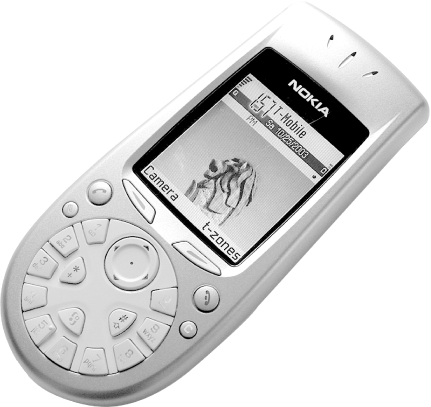 7.2.2 How GPRS WorksGPRS uses multiple timeslots for sending data. In theory, GPRS can use up to eight timeslots, but physical constraints (such as the number of users currently on the network, as well as the coverage quality) have reduced the number to a maximum of five, with one or two timeslots reserved for upstream communications (leaving three or four for downloads). There are four coding schemes used in GPRS networks. Table 7-2shows these, their data rate per timeslot, and the maximum data speed for eight timeslots. Table 7-2. Coding schemes used in GPRS
The coding scheme is determined by the service provider and depends on factors such as the quality of the channel (the radio link between the phone and the base station). CS-1 has the highest reliability (but the lowest data rate), and CS-4 has the least reliability (but the highest data rate). Each phone has a certain number of timeslots used for downloading and uploading. The manufacturer of the phone determines the number of timeslots. For example, the Sony Ericsson T68i has four timeslots allocated for downloads, and one for uploads, so it's called a 4+1 device. With the CS-1 coding scheme, the maximum download speed would be 36.2 Kbps (9.05 Kbps x 4). The Nokia 3650 is a 3+2 device. With the CS-2 coding scheme, the maximum download speed would be 40.2 Kbps (13.4 Kbps x 3). What if a phone call comes in while you are connected to the Internet? Most phones will only let you do one thing at a time, and answering a phone call will put your GPRS connection on hold until you are done with the call. 7.2.3 GPRS PhonesYou can use a GPRS-enabled phone (like the Sony Ericsson T610 and the Nokia 3650) to access WAP sites (a mostly text version of the Web) on your mobile phone. You can also view full web sites, if your phone's browser supports it; if not, you may be able to find a third-party web browser for your phone at http://www.handango.com. You can also connect your Macintosh to your mobile phone (through Bluetooth or infrared) and use it as a modem. 7.2.3.1 SIM cardsA SIM is a smart card placed inside a GSM phone that identifies the user account to the network. It handles tasks such as authentication and acts as data storage for user data such as phone numbers , SMS messages, and network information. Figure 7-3 shows a SIM card inserted into a mobile phone. A SIM card may also contain applications that run on the phone. Figure 7-3. A SIM card inserted into a mobile phone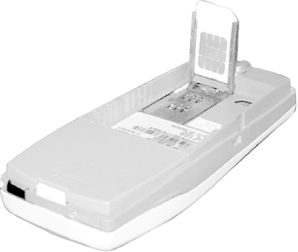 7.2.4 Configuring a Bluetooth-Enabled Mobile Phonefor GPRS AccessIf you have a Bluetooth-enabled mobile phone, such as the Sony Ericsson T68i or Nokia 3650, you can set it up as a Bluetooth modem. In this section, we will show you how to wirelessly connect your Mac to the Internet using GPRS. Before you begin, ensure that your Mac is Bluetooth-enabled. See Chapter 6 for more information about Bluetooth.
Figure 7-4. Setting up a Bluetooth device
Figure 7-5. Configuring a mobile phone for data access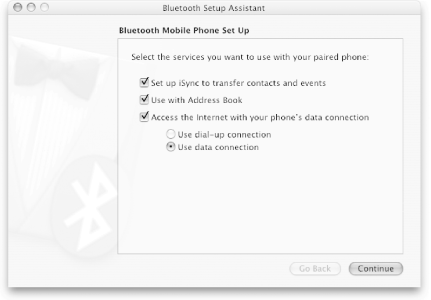
Figure 7-6. Entering credentials for dialing up to your ISP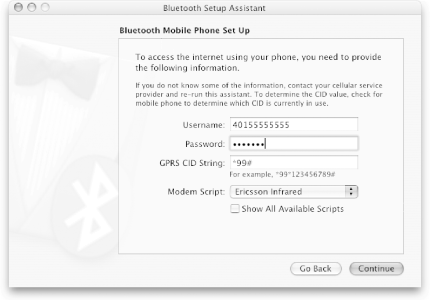
Figure 7-7. Dialing the Bluetooth data connection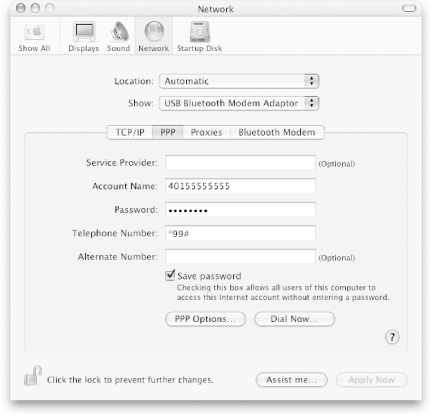
Figure 7-8. Using Internet Connect to dial the Bluetooth data connection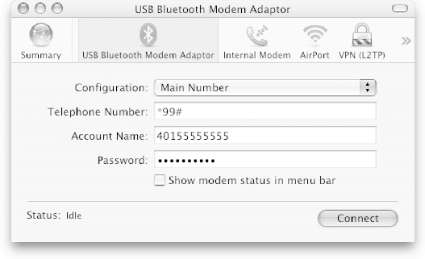
Figure 7-9. Viewing the status of the Bluetooth connection
7.2.5 Dialing an ISP with a Bluetooth-Enabled Mobile PhoneCircuit Switched Data (CSD) is a plain- vanilla way to transfer data using a circuit switching technique. It is like making a voice call between two parties ”you have to establish a connection first. Once you are connected, you can start talking. With CSD, you're charged by the minute. CSD allows a data rate of 9.6 Kbps to 14.4 Kbps. High Speed Circuit Switched Data (HSCSD) is the same as CSD except that its data rate is much higher ”up to 43.2 Kbps is possible. Compared to CSD, GPRS charges are usually billed based on the data actually transferred, not by connection time. However, some providers offer very limited GPRS service. For example, it would not be unusual to get 500 to 1000 voice minutes per month for $40 but to get only 20 MB of data for another $40. So, when you run out of megabytes at GPRS speeds (around 40 Kbps), you can switch over to dialing into a dial-up ISP or your workplace at CSD speeds, at which point you start using up your voice minutes (and whatever fees your ISP charges). Note that some U.S. providers do not permit CSD calls. For example, as of this writing, it is impossible to initiate a CSD call with AT&T Wireless's GSM service. |
EAN: 2147483647
Pages: 100
